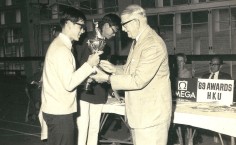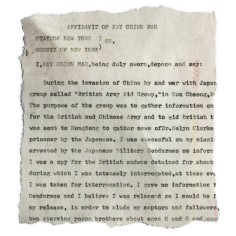
Secret wartime agents who defied Japanese during occupation of Hong Kong
With people like Kay Chinn Mah, the British Army Aid Group (BAAG) served as an important intelligence unit active in southern China and Hong Kong during wartime. Their secret contributions became known only after the second world war.
The group was founded by Colonel Lindsay Ride (1898-1977), an Australian soldier, physiologist and musician in Hong Kong, after he escaped from the Sham Shui Po prisoner-of-war camp to the mainland with the help of local communist guerillas. He later became vice chancellor of the University of Hong Kong, four years after the war ended.

Most of the leaders were British military officials who had served in the city; agents were mainly Chinese or Eurasians.
"The BAAG played an important role during the war by preventing the effective use of Hong Kong as a Japanese shipping and naval base in the South China Sea," said Dr Kwong Chi-man,a military historian at Baptist University.
Its members monitored Japanese shipping, made contact with prisoners of war and the internees at Stanley Prison, and collected general information about Japanese rule and conditions in the city.
"Such information helped the British to plan and later implement the immediate relief and reconstruction of HK when they returned," said Kwong.
"For example, the BAAG noted that Hong Kong lacked food as early as in mid-1942 - the information allowed the British to plan for food convoys to Hong Kong [Operation Armour] early."

"My original aim was only to collect for myself all the information I could find about this unique unit, the BAAG. As I collected, I could see the information might be of interest to many other groups of people, those who wondered how their families fared during this momentous period, how Hong Kong was defended, often boulder by boulder, and the stories of bravery and participation of so many Hong Kong men and women," she told the via e-mail from Norway.
"Not least, of course, the dedication and inspiration of the men and women of the BAAG."
